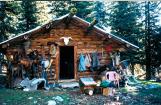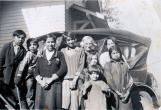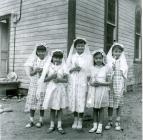36
(l to r) Nora Allison Yakumtikum (xil xatkw) and Maggie Terbasket1925
Chopaka BC Canada
 Credits:
Credits:Enowkin Centre, Penticton BC
37
Similkameen TerritoryThe lands of the Similkameen included the valleys from the Skagit to Christina Lake and from Vernon to Brewster.
The lands of the Similkameen people included areas that were expropraited by the Federal Government to provide for the Veterans that returned from the war. These lands were taken without consultation of the Similkameen people.
To date there remains existing Specific Land Claims that will at some point be addressed between the Federal and Provincial Governments and the Indigenous peoples of the nation and the community.
When reserves were established, the lands set aside for the Similkameen People were;
IR#1 the entirety of Cawston Flats
IR#2 Similkameen
IR#3 Kilpoola
IR#4 Narcisse's Farm
IR #5 from Upper Cawston Flats through including Rocking Chair Ranch
IR Keremeos Creek the flat of Bear Frasch's through to Sportsman's Corner (originally a village site)
IR#6 Blind Creek
IR#7 Chopaka North
IR#8 Chopaka South
IR#9 Alexis
IR#10 Ashnola
IR#11 John's Creek
IR#12/12 A Keremeos Forks
IR#13 Range lands
38
Nehumpchin family children (l to r) Katherine, Maggie and Mose Nehumpchin1917
Oroville Washington
 Credits:
Credits:Lower Similkameen Indian Band
39
EducationThe students rode on horseback to a small school house located near the United States border. The school was a 14' x 20' Log and Sod schoolhouse. The second schoolhouse was stick built and was located further south of the original location but was placed on the creekside. The second schoolhouse held approximately 30 students. Of the 30 students 1/3 were native students, 1/3 were local students and 1/3 were students of workers from the mines.
As with all Native peoples, the Government made it mandatory that Indian children attend Residential schools. The children were picked up by cattle truck and sent originally to the Residential school in Cranbrook. Upon closure of the Cranbrook school the children were sent to Kamloops Residental School. The Mormon recruiters came into the Similkameen Valley to pick up children for conversion to their faith and for attendence to school. Parents of the children caught up to the group in the United States and brought the children back home. Many of the Similkameen children also attended the Mission School at Omak Washington.
Following closure of the Cranbrook Residential school, students attended the public school that is now Cawston Hall. Later the Cawston School was constructed and then further renovated to its current state.
41
Sylvester McLean at the School house in Chopaka1970's
Chopaka BC Canada
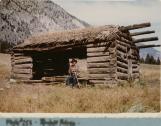 Credits:
Credits:Lower Similkameen Indian Band
42
Merchants of the SimilkameenThe Similkameen people traded buckskin moccassins and buckskin gloves, vests and other materials they had for basic staple products that were brought by merchants. These included such things as flour, coffee, sugar, rice, textile material to make clothing and blankets, shells for hunting and other basic goods. The women would make the traditional trade items during the winter season and in the spring they traded for supplies that lasted the families for half of the year.
Originally the Similkameen people did their trading with the Nighthawk General Store owners and later Princes Department Store. Prior to the bridge being built, the Similkameen people were considered to be United States citizens.
43
Nighthawk General Store1960's
Nighthawk Washington, USA
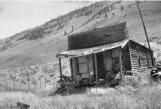 Credits:
Credits:Ann Briley Collection, Okanagan County Historical Museum
44
ReligionThe people of the Similkamix practiced beliefs of their culture. Following settlement, the people were prohibited from practicing ceremonial or spiritual rituals. To engage in Traditional practices would result in arrests and charges being made. The Similkameen people were converted to the Roman Catholic religion.
Today there is a diversity in belief ranging from Traditional Indigenous beliefs to a multitude of contemporary religions and Christianity.
The Spiritual practices of the Similkamix people continue today. Many of the spiritual practices were introduced by coyote. There are many spiritual sites and many ceremonies that were given for our people to follow. These are found in the stories of the people.
46
InfrastructureTransportation of the native peoples was by water and by trek over the land. The people built rafts and canoes to travel the lakes and rivers in the valleys.
The Similkameen people had horses well before the invasion of the Spaniards. The horses began to graze wild in the hills and mountains of the area. After settlement, the people relied on horse and buggy. There were places of encampment all through the valleys where travellers would stay during their journeys between tribal communities.
Transport
Most highways that are used today were built on the original trails of the Similkameen and Okanagan people. What later became Allison pass was the original pack trail that belonged to Nora Yakumticum who ran a pack train from Greenwood to Hope and the Coastal areas.
Roadways
Travel occurred by horseback from Chopaka and Similkameen to Cawston and to Keremeos. Pre 1955 the community of Chopaka used the Chopaka road to Nighthawk, USA road and travelled up through Highway 3 to Cawston and Keremeos. The original highway was what is now called Barcelo Road and it joined the main route near the town of Keremeos.
Electricity
West Kootenay power was put in at Chopaka in 1965 onward. The company changed to Aquila and Fortis.
In the original agreement with West Kootenay, the company was to install poles to residents on reserve for free in exchange for the powerlines that were placed within the community.
Telephone
BC Telephone Company
Telus
Telephone service to the area started in community as 2 and 5 party lines. Each house had a different ring tone in their homes to denote whether the call was meant for their household.
Railway
Vancouver Victoria and Eastern Railway
Great Northern Railway
Burlington Northern Railway
From the period 1906 until 1955, native peoples of the Similkameen Reserves travelled by train from Chopaka and the Similkameen into the towns of Princeton and Keremeos.
Gaslines
BC Gas
Inland Gas
BC Gas Southern Crossing
Tarasen Gas Inland Pacific Connector
47
In the area of Dawson Orchards facing south. Originally part of highway 31930's
Cawston, BC, Canada
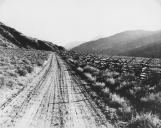 Credits:
Credits:Lower Similkameen Indian Band
48
Across the valley from Chopaka1930's to 1940's
Hwy 3 south of Cawston
 Credits:
Credits:Ann Briley Collection, Okanagan Museum Historical Society
